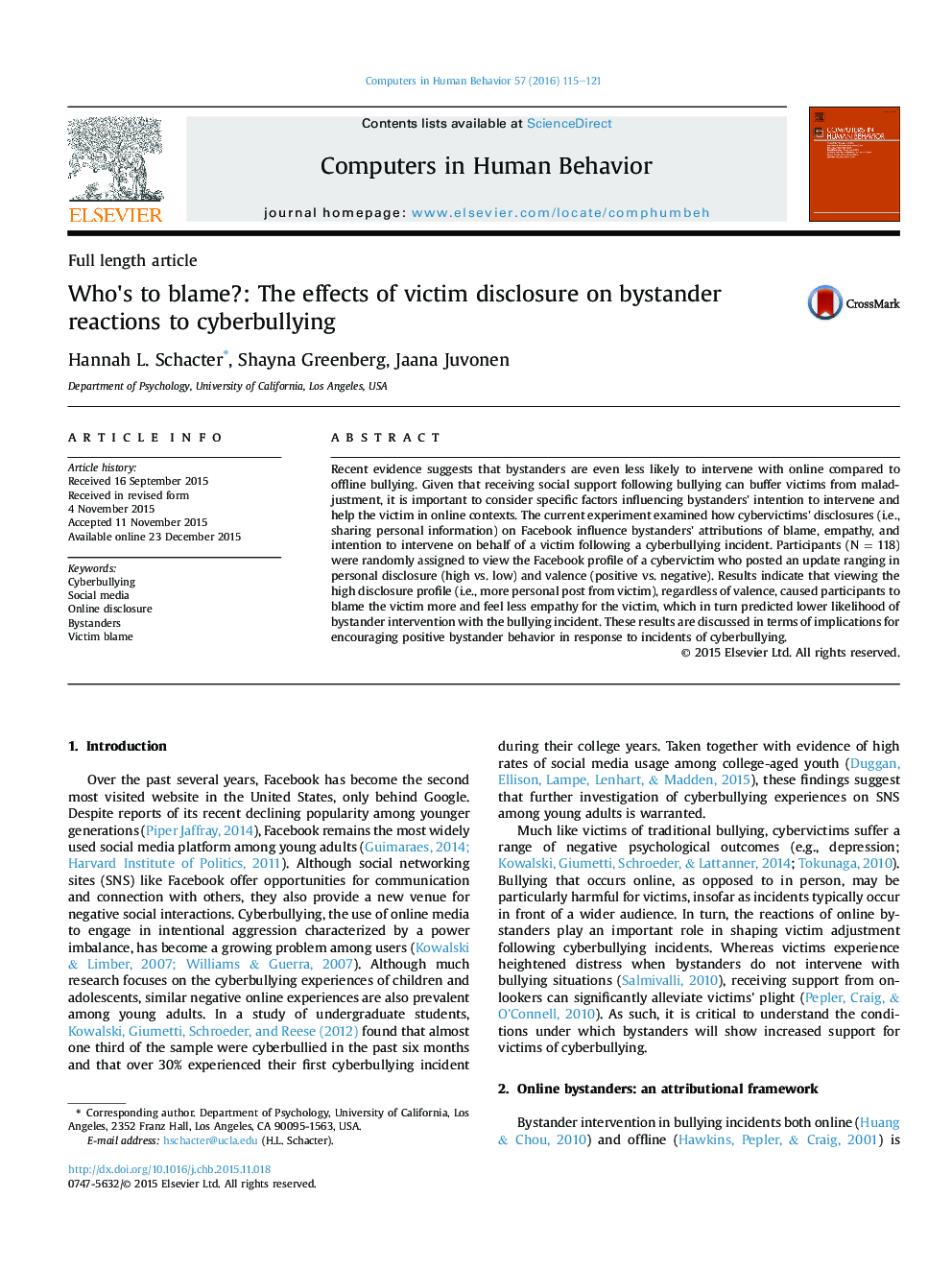| کد مقاله | کد نشریه | سال انتشار | مقاله انگلیسی | نسخه تمام متن |
|---|---|---|---|---|
| 350220 | 618433 | 2016 | 7 صفحه PDF | دانلود رایگان |
• Online bystanders' reactions to cyberbullying are examined experimentally.
• Bystanders place more blame on victims who exhibit high disclosure on Facebook.
• Bystanders feel less empathy for victims who exhibit high disclosure on Facebook.
• More victim blame and less empathy predict less supportive bystander behavior.
Recent evidence suggests that bystanders are even less likely to intervene with online compared to offline bullying. Given that receiving social support following bullying can buffer victims from maladjustment, it is important to consider specific factors influencing bystanders' intention to intervene and help the victim in online contexts. The current experiment examined how cybervictims' disclosures (i.e., sharing personal information) on Facebook influence bystanders' attributions of blame, empathy, and intention to intervene on behalf of a victim following a cyberbullying incident. Participants (N = 118) were randomly assigned to view the Facebook profile of a cybervictim who posted an update ranging in personal disclosure (high vs. low) and valence (positive vs. negative). Results indicate that viewing the high disclosure profile (i.e., more personal post from victim), regardless of valence, caused participants to blame the victim more and feel less empathy for the victim, which in turn predicted lower likelihood of bystander intervention with the bullying incident. These results are discussed in terms of implications for encouraging positive bystander behavior in response to incidents of cyberbullying.
Journal: Computers in Human Behavior - Volume 57, April 2016, Pages 115–121
